These annuals may give the impression that they are fragile, but in reality, they require very little care and are a beautiful addition to any flower bed. Petunias are flowering plants that attract attention due to their rich blooms, brilliant colors, and appealing aroma.
However, this attention is not always positive. In this article, find out what is eating my petunias.
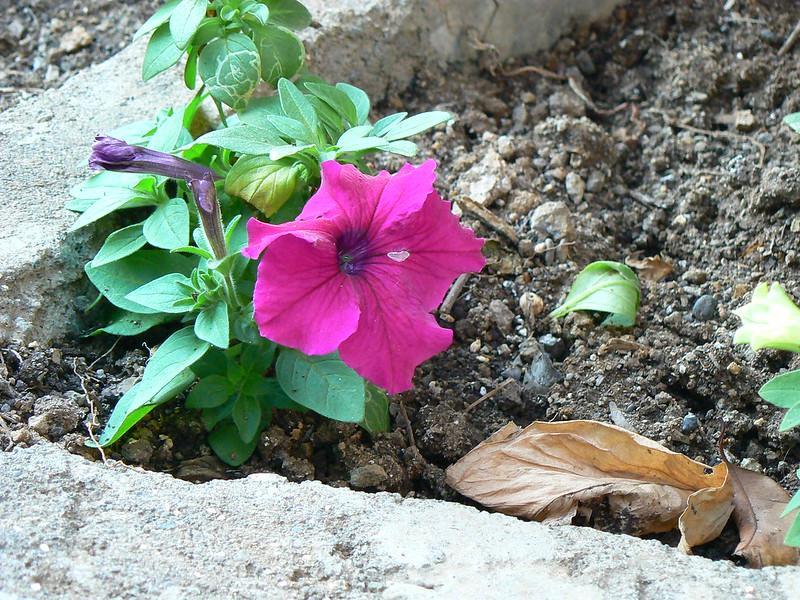
One of the most frequently used garden flowers for borders and pots.
Many pests, including caterpillars, aphids, whiteflies, slugs, and snails, find petunias an irresistible food source. Petunias are also occasionally consumed as food by a wide variety of large animals, including squirrels, mice, rabbits, chickens, deer, and mules, to name a few.
Continue reading if you are interested in getting some information about what is eating your petunias and what you can do about it.
Petunia Eating Insects & Animals
Whether you are an experienced gardener or have just started showcasing a beautiful selection of flowers in your yard, you are aware that your plants are susceptible to animals, bugs, and ailments that can significantly change their appearance.
This is the case regardless of whether you have been gardening for a long time or have just started.
And, there is only so much you can do to prevent animals from eating your plants. However, you can do a few things to safeguard your lovely plants, such as your petunias. These measures and common petunia pests and diseases are described below.
1. Caterpillars
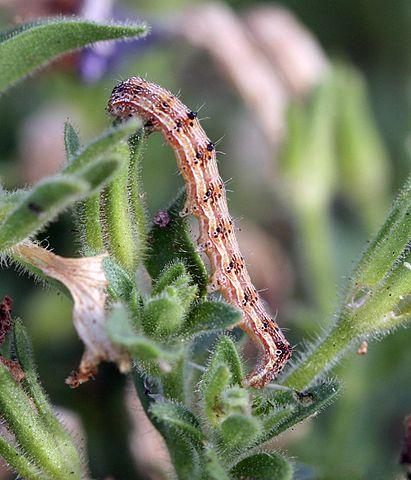
Tobacco budworms, also known as geranium budworms, are common geranium, petunia, and nicotiana pests.
The tobacco budworm and the variegated cutworm are two of the most common caterpillars that feast on petunias. The variegated cutworms feed on the blooms and roots of the petunia plant before settling down to make their home on the primary roots of the plant.
In contrast, the tobacco budworm feeds on the unopened flower buds and petals of the flowers it infests.
A characteristic behavior of tobacco budworms is the deposition of black spots or feces on the flower buds. So, if you notice black specks and a hole on the bud, you have a budworm infestation.
Blooms can still emerge from buds that have been damaged, but the petals of these flowers will have big holes in them. Late summer is usually the best time to spot these caterpillars.
Control
Picking the caterpillars off the petunias by hand and dumping them into a bucket of soapy water is the quickest and most straightforward way to get rid of them.
Bacillus thuringiensis, generally known as BT, is an efficient treatment for caterpillars; however, it is not very effective against tobacco budworms. This is because the tobacco budworm does not ingest enough of this insecticide, rendering BT ineffective against it.
You can use a residual pesticide like permethrin or bifenthrin as a last resort on petunias.
2. Spider Mites
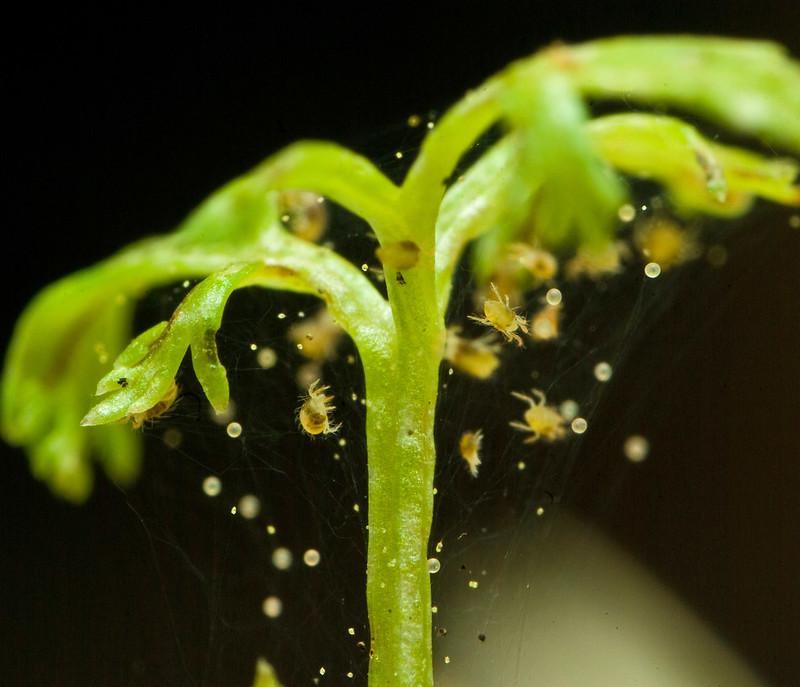
Spider mites are a common pest of indoor plants. They prefer warm, dry places with low humidity.
Spider mites are not insects but rather relatives of ticks and spiders. Their common name comes from their ability to make silk, which most spider mite species spin on the plants they feed on. Spider mites are another common type of pest that feeds on petunias.
They produce discolored patches on the leaves, which eventually get dry and fall off the plant. Spider mites are more accessible to detect than other insects because of the tiny webs they build on infested plants.
The first sign of damage caused by spider mites will be the appearance of little yellow or brown spots on the petunia leaves. If the plant is severely affected, the leaves may become totally yellow, and the plant may cease growing altogether.
Control
One natural remedy for spider mites is to simply spray the plant down with water using a nozzle hose. The power of the water stream is sufficient to dislodge the majority of the spider mites that are clinging to the plant.
If that does not work, you can try spraying neem oil, horticultural oils, and insecticidal soaps on your petunias to stop spider mites from spreading.
If you choose to apply neem oil, you should only do so in the morning so that it has time to dry on the leaves before midday and does not burn them.
3. Aphids, Thrips, & Mealybugs
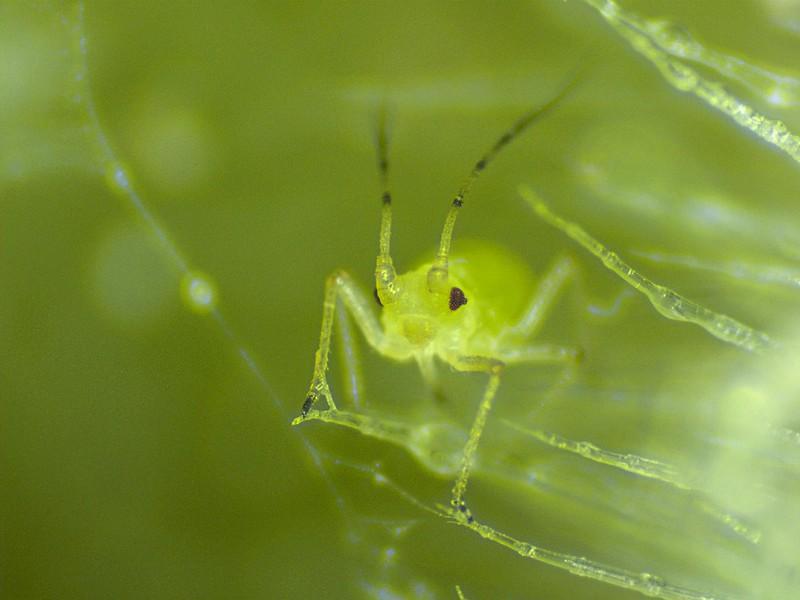
Aphids, mealybugs, and thrips secrete honeydew, a sweet fluid that attracts ants.
Aphids are little, soft-bodied, pear-shaped insects that suck plant juices from fragile new growth and the undersides of leaves.
Thrips are tiny, cream- or black-colored sucking insects. They are so small that you will often detect the symptoms of their damage before you detect their presence.
Lastly, mealybugs cause plant damage by sucking sap, and their eating can cause yellowing leaves, stunting, dieback, or death.
If the aphid, thrip, and mealybug issues are not addressed, the honeydew on the leaves may draw bacterial and fungal diseases to plants causing further damage.
Control
The most straightforward technique to get rid of aphids and thrips in minor infestations is to spray them with water. Aim towards the underside of the leaves, where they frequently conceal themselves.
Utilizing an organic insecticide like neem oil is an alternative choice. Once more, use it at night or in the morning to prevent burning the leaves.
Finally, you can use soapy water or artificial pesticides. In the case of mealybugs, you will need to put in a bit more effort because they adhere diligently to the plant’s body.
4. Snails & Slugs
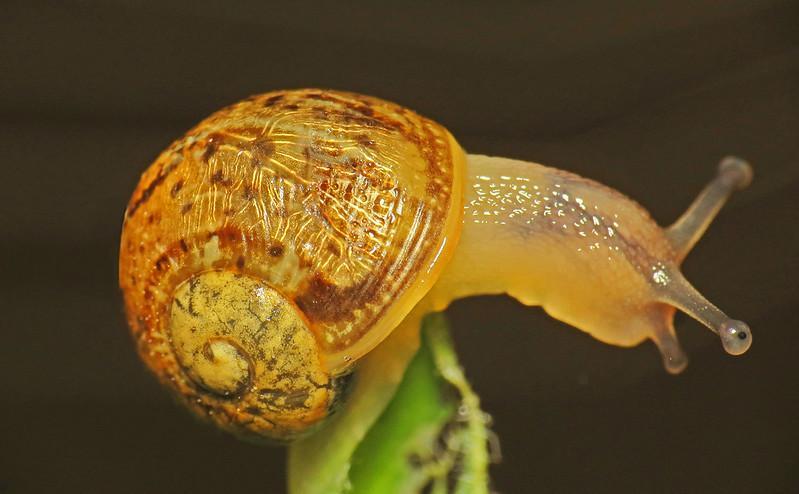
Slugs and snails in your petunia garden indicate that you are not adequately caring for the plants.
Don’t be fooled by a snail or slug’s sluggish movement. These long slimy black crawlers are voracious eaters that devour plants at breakneck speed. These will pierce large holes in your petunia leaves.
Having too much mulch around your plants is typically the problem, as mulch is good at retaining moisture which snails and slugs love.
Snails and slugs leave a trail of damage behind them, which consists of mucus with a silvery tint that reveals their presence. Slugs usually start with the stem and then make their way to the blossoms so they can eat the flowers.
Slugs are likely to eat petunias overnight, and when they do so, petunias will start to decay. The petunias’ decay will draw more slugs, resulting in further harm.
Control
Slugs and snails can also be removed by hand, just like caterpillars. Keep your garden tidy to minimize hiding places to discourage snails and slugs from entering your garden and munching on petunias.
Utilizing diatomaceous earth is another helpful idea. Its sharpness damages the snail or slug’s skin, causing dehydration and eventual death.
Snails and slugs have keen senses of smell, and some plants, including lavender, mint, and garlic, have odors that deter them.
5. Rabbits & Deer

Petunias are a type of flowering plant that rabbits like eating at any time.
Insects aren’t the only ones who could eat your petunias. Petunias and other flowers are frequently consumed by larger animals, especially rabbits and deer.
Deer, in particular, are elusive but sly at night. Pumpkins, young pine trees, and even ornamental plants like petunias are their favorite. If the upper portion of the trees in your yard appears to have been trampled by a large animal, there is a good likelihood that a deer has been creeping around.
On the other hand, the higher and lower incisors of a rabbit allow it to cut cleanly through your petunias when eating them. Furthermore, rabbits frequently leave pea-sized droppings or furry tufts behind, and you can usually see evidence of digging in your garden.
Control
It is cruel and unethical to kill rabbits and deer in order to safeguard a plant, even though these animals might be a nuisance.
Deer and rabbits can be kept out of garden areas using chicken wire. The fence should be at least 3 to 4 feet tall and buried 6 inches or more to prevent rabbits from digging under it.
If erecting a fence is too time-consuming, you can deter wildlife with fragrant plants. For example, the aromas of oregano, chives, and lavender deter them from eating your petunias.
6. Squirrels, Chipmunks & Voles
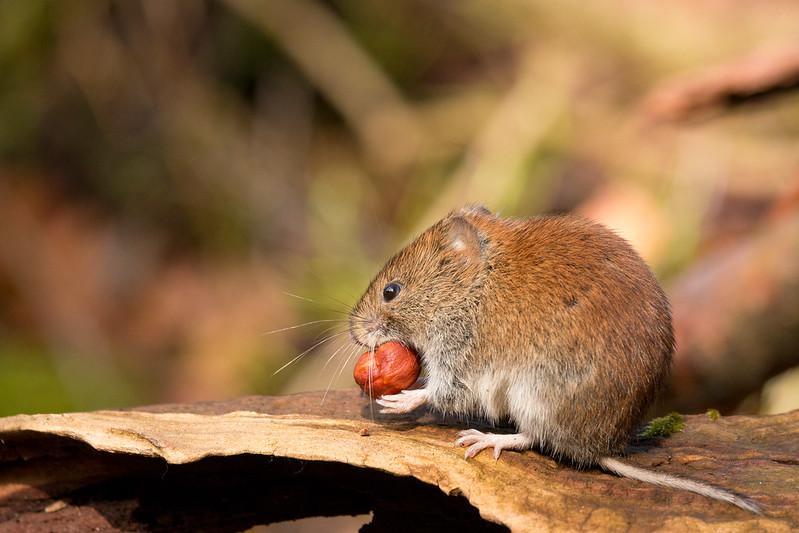
The spicy, sweet petunia petals are incredibly alluring and quite tasty for garden squirrels and moles.
Voles consume a wide range of garden plants, yet you’ll never see bite scars. These animals have adapted to a life underground, where they feed on the roots of plants.
On the other hand, squirrels and chipmunks are the same creatures, simply with different living conditions. Chipmunks tend to remain on the ground and occasionally dig burrows, whereas squirrels make their homes on the branches of trees.
All of these creatures are highly agile, and even having your petunias raised in a swinging basket won’t keep squirrels away. In addition, petunias that are withering and the soil surrounding your plants that have been disturbed are indicators that voles are present.
However, there is no apparent damage to the flowers themselves.
Control
If you see that holes are dug into your soil, you should dig a little under the plant to determine whether or not the roots are being devoured. If they are, you should use vole traps to catch them and move them elsewhere.
Use a physical barrier that prevents the squirrel from accessing the space if at all possible. In most circumstances, enclosing the garden in the metal mesh should do just fine.
Planting peppermint, geranium, and clove is also an excellent way to discourage these animals from entering your garden.
Petunia Diseases
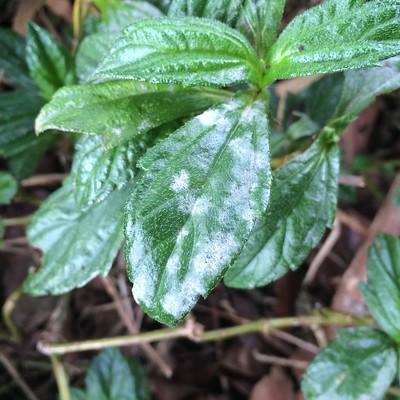
Powdery mildew is a widespread fungal disease that affects many different kinds of plants.
Sometimes, the reason why you are finding holes in your petunia leaves is not insects or other animals but plant diseases. Damage from some diseases can also look like your petunias have been eaten or consumed.
Let’s discuss the most common of these diseases now.
Botrytis Blight
Botrytis cinerea is a prevalent fungal infection that can pose a significant threat to the health of your petunia plants. A damp, humid environment is good for disease sporulation and spread. If the leaves on your plant have brown or gray spores, all you need to do is trim away the damaged sections and limit the amount of water you provide your petunias.
Powdery Mildews
Powdery mildews are one of the most prevalent diseases of ornamental plants, affecting a wide range of nursery, flowering, and woody plants. Your plants will likely develop powdery mildew if you crowd them too closely. If your plant gets it, the leaves will be covered in a white powder, and the entire plant will appear powdered.
Since they can only thrive in living plant tissue, most Powdery mildews have developed to avoid killing their hosts. To control powdery mildews, carefully clean the greenhouse between crops, removing all weed hosts and volunteer plants. High humidity levels favor the development of this disease.
Root, Stem, and Crown Rots
Petunias that are planted in places with poor drainage or in locations that are persistently overwatered frequently suffer from root rot, stem rot, and crown rot. Even with consistent watering, the leaves will wilt, and the stems may become more pliable.
If an infected petunia can be salvaged at all, the sole remedy is to fix the drainage problem and water it less frequently. Pulling up plants and beginning again earlier in the season is often the simplest solution.
Conclusion
In conclusion, several organisms, such as insects and animals, find petunias to be a delicious food source. If this is not controlled, it may have a negative impact on the plant and your garden. Several things can be done to stop and prevent anything like this from happening, most of which are natural and won’t harm people, animals, or the environment.
Best wishes, and may your garden thrive!
Frequently Asked Questions
What can I spray on my petunias?
Horticultural oils, such as neem oil, can repel insects from petunias and other flowering plants. In addition, these oils can be safely applied to plants, including petunias, to prevent leaf miners, fungus gnats, spider mites, scales, aphids, and other bugs.
Can I spray soapy water on petunias?
Liquid dish soap is an excellent natural bug repellent for plants, especially if they are on a single petunia plant. Spray the foliage with soapy water, making sure to saturate it thoroughly. For optimal results, repeat the soapy water application once per week.
How do you get rid of black spots on petunias?
The tiny black specks on petunia leaves could be seeds or harmful pests. In any case, you can prevent the adverse effects by using a garden sprayer filled with a solution containing Bacillus thuringiensis as soon as you notice black spots on petunias.
What insect lays eggs on petunias?
If you have found tiny insect eggs on your petunia plants, there could be many potential culprits behind this mess. However, most frequently, it is a doing of tobacco budworms, adult leafminers, and spider mites infesting your petunia plants.
What does a dying petunia look like?
Petunias prefer soil that drains properly; they will wilt and most likely die if their soil is wet and saturated. Depending on the weather and how long it has been since it started dying or is dead, a petunia will be limp and crumpled; in some cases, it may even be brown and crispy.
What do mites look like on petunias?
Spider mites, small, eight-legged relatives of spiders that resemble tiny, moving dots to the unaided eye, are a common pest of petunias. The first sign of mite feeding damage is a mild stippling on leaves; the leaves turn bronze, yellow or red, and finally, they fall off the plant. Additionally, the leaves may have delicate webbing sometimes.
How do you keep petunias from getting worms?
To keep worms from destroying the petunias, pick them directly off the plant and dump them in soapy water. However, as soon as the eggs appear, starting a weekly spraying schedule with a worm-targeting insecticide is crucial.
Sources For Further Reading
Managing Pests in Gardens: Floriculture: Petunia—UC IPM. (2022). Retrieved 30 July 2022, from http://ipm.ucanr.edu/PMG/GARDEN/FLOWERS/petunia.html
Petunia Diseases. The Pennsylvania State University. (2022). Retrieved 30 July 2022, from https://extension.psu.edu/petunia-diseases
Petunia: Better Than Ever. Integrated Pest Management, University of Missouri. (2022). Retrieved 30 July 2022, from https://ipm.missouri.edu/MEG/2012/3/Petunia-Better-Than-Ever/
Editor’s Recommendations
What Is Eating My Pepper Plants? and How To Get Rid Of It For Good!
What Is Eating My Mint Leaves? A Comprehensive Guide To Mint Pest Control!
What Is Eating My Marigolds? The Major Culprits & Some Quick Fixes!







